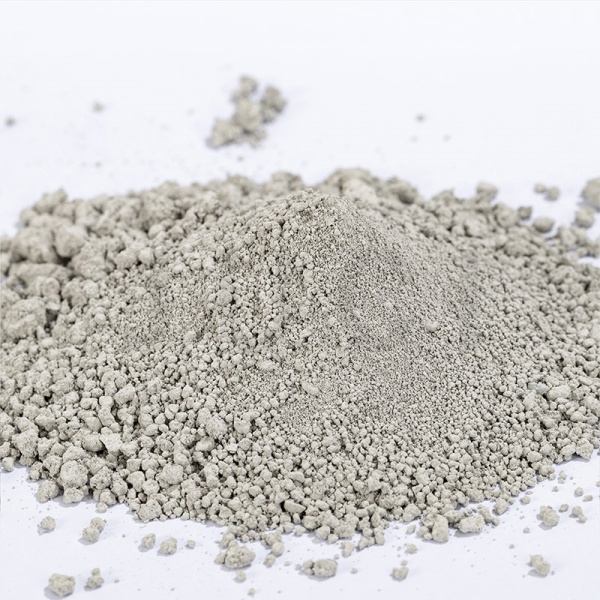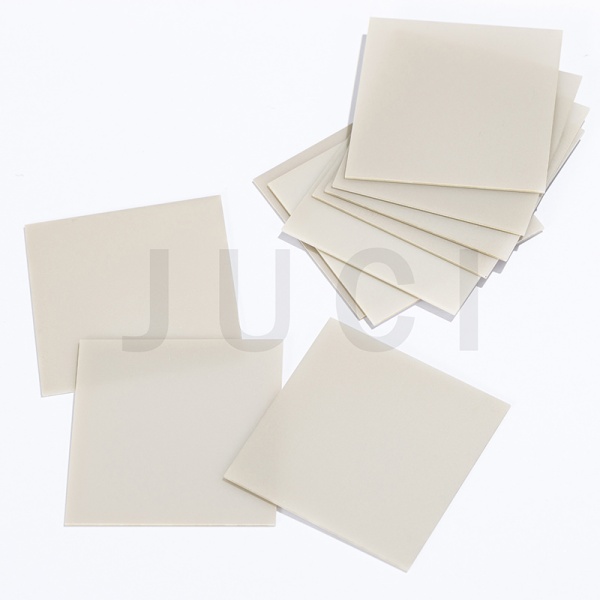



С ростом и применением силовых приборов, особенно полупроводников третьего поколения, полупроводниковые приборы постепенно развиваются в сторону высокой мощности, миниатюризации, интеграции и многофункциональности. Это предъявляет более высокие требования к производительности упаковочных подложек. Керамические подложки с их высокой теплопроводностью, превосходной термостойкостью, низким коэффициентом теплового расширения, высокой механической прочностью, хорошей изоляцией, коррозионной стойкостью и радиационной стойкостью широко используются в упаковке электронных устройств.
Итак, между нитрид алюминия (AlN) и нитрид кремния (Si₃N₄), какой из упаковочных материалов является наиболее перспективным?

Требования к керамическим материалам подложки
1. Высокая теплопроводность для удовлетворения потребностей в отводе тепла.
2. Отличная термостойкость для применения при высоких температурах (выше 200°C).
3. Согласование коэффициента теплового расширения для снижения термического напряжения между чипом и подложкой.
4. Низкая диэлектрическая проницаемость для высокочастотных характеристик, уменьшения задержки сигнала и повышения скорости передачи.
5. Высокая механическая прочность, позволяющая выдерживать механические нагрузки во время упаковки и применения.
6. Хорошая коррозионная стойкость, выдерживает воздействие сильных кислот, щелочей, кипящей воды и органических растворителей.
7. Плотная структура, соответствующая требованиям герметичной упаковки электронных устройств.
Нитрид кремния (Si₃N₄)
Керамические подложки Si₃N₄ имеют модуль упругости 320 ГПа, прочность на изгиб 920 МПа, коэффициент теплового расширения всего 3,2 × 10⁻⁶/°C и диэлектрическую проницаемость 9,4. Они демонстрируют высокую твердость, прочность, низкое тепловое расширение и отличную коррозионную стойкость.
Первоначально из-за сложной кристаллической структуры Si₃N₄, которая вызывает значительное рассеяние фононов, его теплопроводность считалась низкой (15–30 Вт/(м·К)), что делало его пригодным только для таких применений, как шарики подшипников и структурные компоненты. Однако позже исследования показали, что низкая теплопроводность была в основном обусловлена дефектами решетки и примесями, и было предсказано, что его теоретическая теплопроводность может достигать 320 Вт/(м·К). Последующие исследования оптимизировали процесс производства, значительно улучшив теплопроводность керамики Si₃N₄, которая в настоящее время достигла 177 Вт/(м·К).
Кроме того, по сравнению с другими керамическими материалами, Si₃N₄ демонстрирует выдающиеся преимущества, особенно в высокотемпературных средах, где он демонстрирует превосходную термическую стабильность, химическую инертность к металлам, сверхвысокую твердость и вязкость разрушения. Прочность на изгиб и вязкость разрушения керамики Si₃N₄ более чем в два раза выше, чем у AlN, что делает подложки Si₃N₄ намного более надежными.
Нитрид алюминия (AlN)
AlN — один из немногих материалов, сочетающих высокую теплопроводность с превосходной электроизоляцией.
К его преимуществам относятся:
Высокая теплопроводность — Теоретическая теплопроводность при комнатной температуре может достигать 320 Вт/(м·К), что в 8–10 раз больше, чем у керамики из оксида алюминия. На практике ее теплопроводность может достигать 200 Вт/(м·К), что облегчает рассеивание тепла в светодиодах и улучшает производительность.
Низкий коэффициент теплового расширения — теоретическое значение составляет 4,6 × 10⁻⁶/K, что близко к значению для широко используемых светодиодных материалов, таких как Si и GaAs. Его поведение теплового расширения также похоже на поведение Si. Кроме того, AlN имеет структуру решетки, соответствующую структуре GaN, что имеет решающее значение для мощных светодиодов высокой производительности.
Широкая запрещенная зона (6,2 эВ) — превосходные изоляционные свойства устраняют необходимость в дополнительной изоляционной обработке в светодиодных приложениях высокой мощности, что упрощает процесс.
Высокая твердость и прочность — благодаря своей структуре вюрцита и прочным ковалентным связям AlN демонстрирует хорошие механические свойства. Он также обладает превосходной химической стабильностью и устойчивостью к высоким температурам, оставаясь стабильным на воздухе до 1000°C и в вакууме до 1400°C, что делает его пригодным для высокотемпературного спекания и коррозионно-стойких применений.

Заключение
Среди существующих керамические материалы подложки, Si₃N₄ обладает самой высокой прочностью на изгиб и износостойкостью, что делает его лучшим с точки зрения комплексных механических свойств. Его чрезвычайно низкий коэффициент теплового расширения также делает его весьма перспективным материалом для корпусирования силовых устройств. Однако сложный процесс его производства, высокая стоимость и относительно низкая теплопроводность ограничивают его использование приложениями, требующими высокой прочности, но умеренного рассеивания тепла.
С другой стороны, AlN превосходит почти по всем параметрам, особенно по теплопроводности, что имеет решающее значение для электронной упаковки. Главным недостатком является его высокая стоимость из-за дорогого сырья и обработки. Однако по мере развития технологии производства AlN ожидается снижение затрат, что прокладывает путь к широкому внедрению в приложениях с мощными светодиодами.
Какой материал, по вашему мнению, будет доминировать в будущем мощной электроники?
О компании Xiamen Juci Technology
Как вершина производитель порошка нитрида алюминия (AlN) В Китае компания Xiamen Juci Technology специализируется на производстве высокочистых и высокопроизводительных Материалы AlN для современных электронных приложений. Наш порошок AlN и керамика обеспечивает исключительную теплопроводность (до 200 Вт/м·К), превосходную электроизоляцию и исключительную механическую прочность, что делает их идеальными для использования в мощных электронных устройствах, корпусирование полупроводников, светодиодное охлаждение и системы 5G/EV следующего поколения.
Контакт для СМИ:
Сямэньская технологическая компания Juci, ООО
Телефон: +86 592 7080230
Электронная почта: miki_huang@chinajuci.com
Веб-сайт: www.jucialnglobal.com